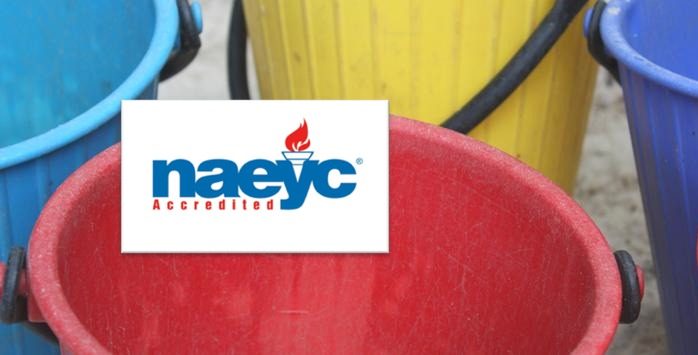Two-Year-Old Classes
Excited for new adventures and armed with newfound physical prowess, two-year-olds are ready to take school by storm (for better or for worse). With so many interactive toys and manipulatives, they have several chances to role-play, get messy, and meet new friends as they learn about a world outside of themselves. Everyday the class ebbs and flows with a set routine of active and quiet times to make the most of a two-year-old’s attention span and energy.
To be eligible for enrollment in our two-year-old classes, children generally must be two years old by September 30th of the current school year. There are two spaces in the two day class available to children who turn two by October 31st of the current school year. Priority for those spaces is given to current and previous preschool members. Students are not required to be potty-trained, and there is a bathroom in the classroom to facilitate toilet training.
All of our classes meet from 9am to 12:15 pm on their assigned days.
A Typical Day
1. Free Play: As social beginners, the beginning of the day is often most challenging for two-year-olds as they adjust to separating from their caregivers and learn to be members of a larger group. A large chunk of time is set aside for free play, where students are free to move about the room to find activities that are developmentally appropriate. From the perfectly sized kitchen and paint easel to the ever-changing sensory and science tables, the two-year-olds learn by doing (almost always enthusiastically).
2. Circle Time: Circle time is a necessary span of downtime where children learn to sit quietly together, take turns, listen to stories and finger plays, and participate in music, name games, and felt board activities. There are typically two different circle times during the course of a school day.
3. Playground Time: Definitely a favorite time of day, playground time is where we “get the wiggles out”. Going to the playground also the gives the students the opportunity to learn how to put their coats and hats on themselves (with the teacher and parent helping to zip up zippers and pull on mittens and boots). Once there, the two-year-olds plunge into the sandbox, shoot down the slides, sway on the swings, and gallop around the playground equipment.
4. Snack Time: To prepare for snack time, the two-year-old preschoolers are shown how to wash their hands properly, find a seat at the group table, and clear their snack things when they are finished. Students are encouraged to express their needs (more water, another helping) as well as the beginnings of proper table etiquette, sharing, and cooperation.
5. Art Projects: While the students always have access to an assortment of art supplies during free play, having a set group project each day allows the teacher to watch and guide each student as they learn to squeeze glue, hold crayons, mold homemade playdough, and paint unique masterpieces. The art produced during this time is based on the process, not the result, and each student is encouraged to express themselves as they see fit.
6. Activity Room: The activity room is very popular with the two-year-olds, and they use every square inch of the room and the adjoining hallway. Since the activity room is a physical, yet intimate, space, the two-year-olds get to participate with each other in ways not usually seen in the classroom or the playground.
Development
Most 2’s are very ready for school where they are social beginners. Their newness is striking; many have never been in a group and some have rarely been parted from their parents. Their chief challenge upon entering school, therefore, is mastering separation and learning to be in a group. Two-year-olds are affectionate, helpful to adults, friendly, curious, very independent and very egocentric. They learn by doing, as do all preschool children, with a special emphasis on sensory learning and exploration.
They are true beginners. From a social aspect, many have not dealt with many peers or with a group or with an new adult to trust (the teacher), and from a physical standpoint, they are just starting an eruption of skills in climbing, jumping and small motor development. Emotionally, two-year-olds are very relaxed, happy and undemanding, and intellectually they are thrilled with new information and exploration.
The 2’s year is thrilling in that adults see the greatest explosion of growth in the preschool years, starting with rather baby-like children, some even with a toddler walk and little speech, and growing into real boys and girls who master so many things as the year goes on.
You’ll notice that after a few weeks in the classroom, two-year-olds can anticipate and follow a schedule, sit together in a group, listen and cooperate with verbal requests and even start to name each other and the adults in the classroom. A two-year-old can do whatever older preschoolers can do; you only have to remove a step. This is true advice in cooking, stories, music, science and all parts of the day.
Appropriate behavior for the 2s includes independent and parallel play for the most part (little interrelated play), very egocentric activities, and more action than talking in the classroom. They display a true liking for people, especially a deep love for parents and, eventually a great devotion to the teacher. There is a strong interest in household jobs that is demonstrated in the popularity of kitchen and doll play, closely followed by information gathering mainly through sensory means (especially water play). They hold a great love for routine and repetition. Thus the 2’s thrive in a well-equipped classroom with many choices of activities and one which offers the sameness the children adore with repeated routines, actions, music, etc.

